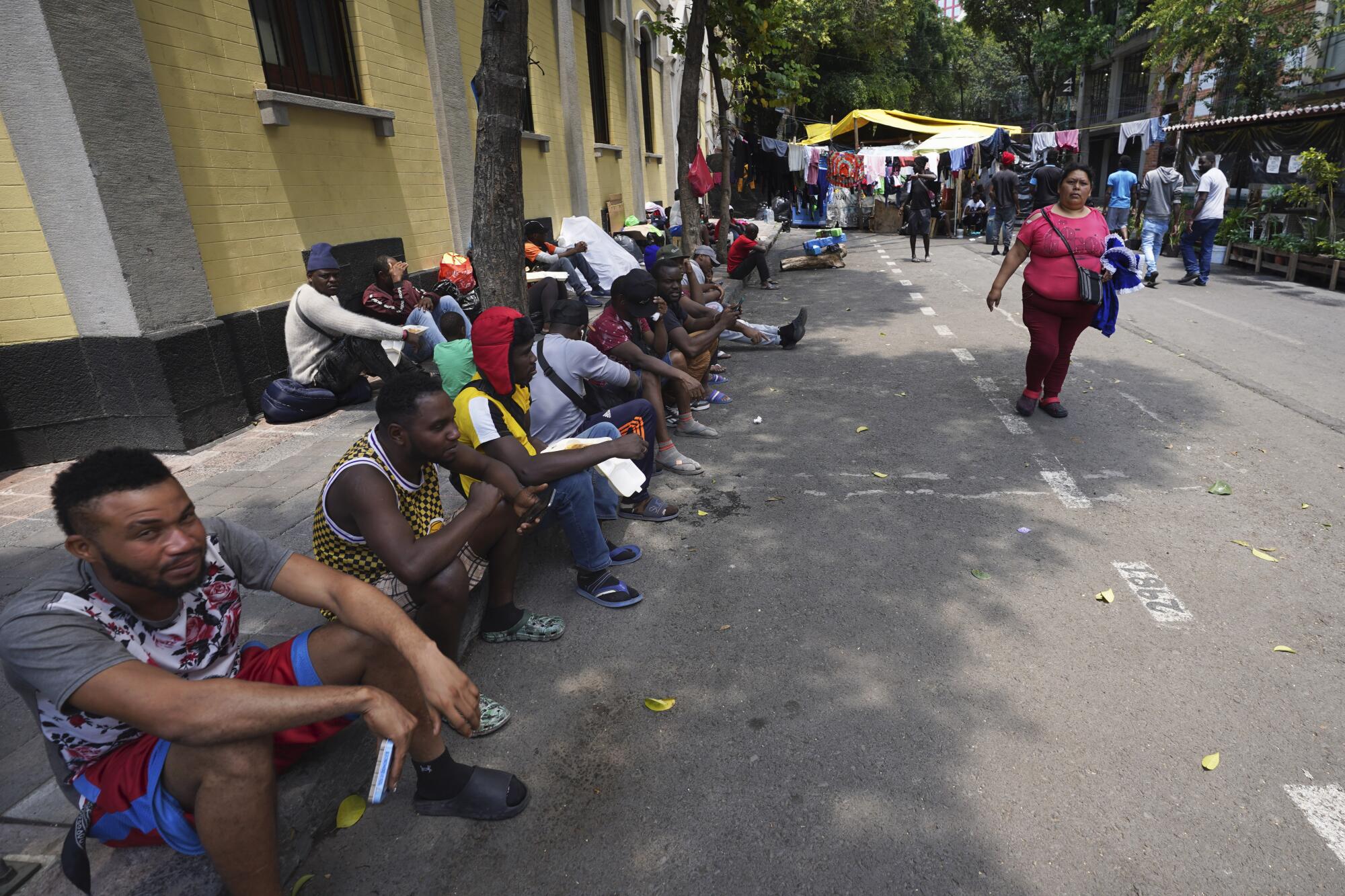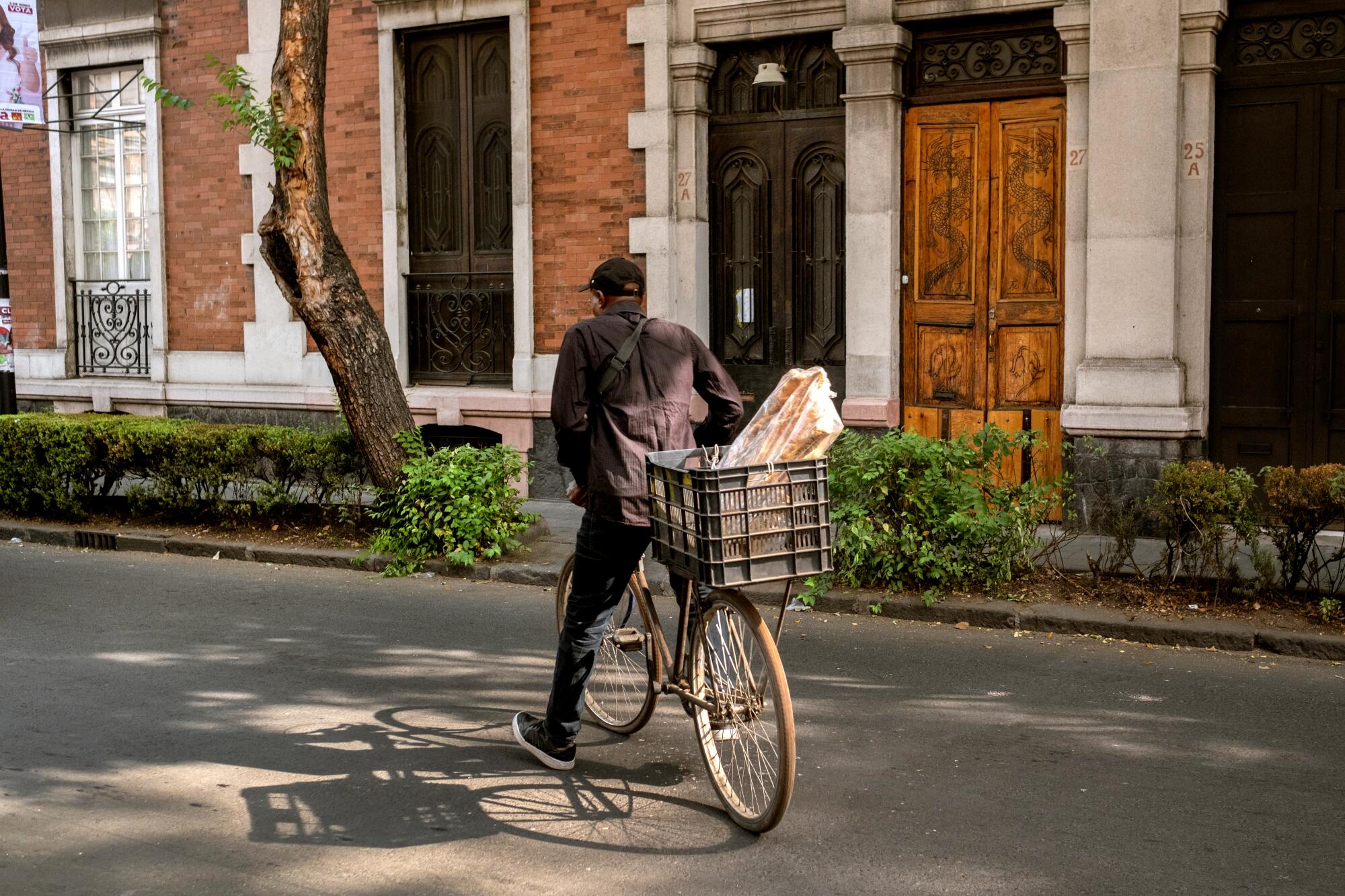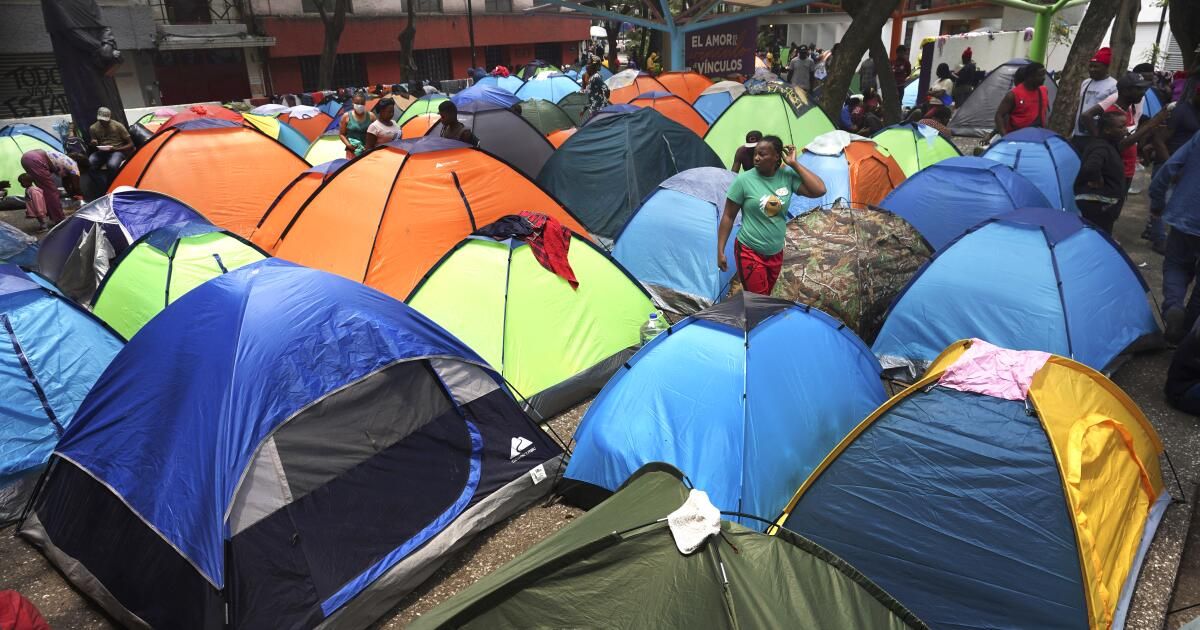In the rapidly gentrifying Mexico City neighborhood of Juarez, tourists lug their suitcases to luxury Airbnbs and music plays at pool parties at Soho House, a new members-only club. The stores sell designer underwear. The cafes serve caviar.
And then there are the tents (hundreds of them) that fill the streets.
Here, destitute immigrants from around the world wait for the opportunity to apply for asylum at the United States border. Entire families in Haiti, Venezuela and other places in crisis live exposed to the elements, cooking over open fires, bathing in water stolen from fountains and finding ways to relieve themselves without public toilets.
Despite the difficulties, Karenis Álvarez, 36, said the three months she spent camping here have been no worse than life in Venezuela, where food and electricity are scarce and the education and health systems have collapsed.
“We have a place to sleep,” Alvarez said. “Even if it's a tent.”
Karenis Álvarez, 36, and her 17-year-old Venezuelan son prepare arepas outside their tent in the Juárez neighborhood.
(Alejandra Rajal / For The Times)
The sprawling encampment has sparked protests from angry residents, who chanted “The street is not a shelter” during a recent demonstration, while organizers complained to local journalists that migrants were making the area unsafe. It has also sparked protests from humanitarian organizations imploring Mexico to do more to protect people passing through its territory.
Above all, it has become a symbol of how an uptick in global migration is transforming not only the U.S. border but also nations to the south.
In Costa Rica, immigrants – mostly Nicaraguans – represent 10% of the population.
In Panama, humanitarian networks have been so overwhelmed by the hundreds of thousands of migrants on the move that authorities have begun transporting them north on buses.
And in Colombia, almost 3 million Venezuelans have sought refuge in recent years; another 2 million have landed in Ecuador and Peru.
The pressures are also acute in Mexico, where a series of US policies in recent years have forced many migrants to wait for extended periods, and where leaders are under pressure from their US counterparts to keep migrants away from the border.
Mexican authorities have stepped up their law enforcement in the north of the country, setting up an extensive network of checkpoints and deporting migrants back to their home countries or sending them south on buses. Many migrants say Mexico City, where police actions are less common, feels safer. But with some shelters packed to four times their capacity, migrants have had to improvise, setting up tents in various parts of the metropolis, including Juárez.

Haitian migrants staying at a shelter in Mexico City on their way north were forced to camp in a park after the shelter closed.
(Marco Ugarte / Associated Press)
Known for its tree-lined streets and historic architecture, the neighborhood has changed rapidly in recent years: Rents have skyrocketed and upscale restaurants and Pilates studios have moved in.
Like other parts of Mexico City, Juárez has become a hub for tourists and “digital nomads”: remote workers, many of them from the United States, who move abroad in part to take advantage of the lower cost of living. They pack natural wine bars, explore high-end clothing stores, and go on bicycle “taco tours.”
Then there are foreigners like Keyla Arriaga.
On a recent hot afternoon, the 23-year-old was sitting on a dusty couch in the middle of a street. As a dog walker drove his backpack between tents and a pair of sunburned travelers passed by drinking beers, Arriaga breastfed her young daughter with one hand and navigated a U.S. government smartphone app with the other. .
The app, CBP One, would allow Arriaga to schedule an appointment at a U.S. port of entry, where she could apply for asylum for herself, her baby, and her two young children, who were dragging her along, increasingly impatient.

Keyla Arriaga, 23, is traveling with her children (Dylan, Bryan and Dana) after fleeing escalating violence in her hometown of Guayaquil, Ecuador.
(Alejandra Rajal / For The Times)
“Mommy, I'm thirsty,” said 5-year-old Bryan.
“Mommy, I want to play,” said 7-year-old Dylan.
Arriaga shushed them as he sifted through a stack of crumpled birth certificates and other identification documents for the information the application required.
They had fled their hometown of Guayaquil, Ecuador, to escape rapidly escalating gang violence. Arriaga hoped to leave Mexico as soon as possible, given what he had heard about the country's cartels and authorities' propensity to extort immigrants.
“The longer I'm here, the more bad things can happen to me,” he said.
But like many in this field, she is stranded. Migrants cannot access CBP One south of Mexico City, and the threat of deportation looms in the north. And once they apply, the wait for an appointment can last months.
Meanwhile, many immigrants are trying to find work.
In Juárez's main market, a noisy warren of stalls where vendors sell food, plants and clothing, it is not unusual to hear tourists mixing Haitian Creole with Spanish and English.
Marc Arthur Garçon, 52, is one of two Haitians who works for a butcher. At home, he owned a photography studio. But after the assassination of President Jovenel Moïse in 2021 plunged Haiti into turmoil, he sold his car and bought a one-way plane ticket to Nicaragua.

Marc Arthur Garçon, 52, leaves the market to fulfill an order for meat. A former photographer in Haiti, he sold all his possessions to leave the country.
(Alejandra Rajal / For The Times)
When he arrived in Mexico, he requested asylum, thinking he would like to live here long-term.
Asylum applications in Mexico have multiplied by a hundred in the last decade, from 1,300 applications in 2013 to 141,000 last year.
In the end, Garcón decided not to stay in Mexico, given how little he earns delivering by bicycle: just $16 for each 12-hour shift. He also worries about the neighbors' growing anger. But he also knows that the United States is not a safe bet and he could face deportation once he enters. Sometimes he feels that there is simply no place for him.
“I'm really frustrated,” he said.
The camp has been a frequent topic of conversation for longtime Juárez residents like Idelbrano López, 40.
Seeing children living on the streets makes him sad, he said. And the unsanitary conditions of the camp make him worry about his own family.
“As a human being, I want to help them, but if we keep helping them, they may stay forever,” he said.

A family of Haitian immigrants camps in Plaza Giordano Bruno.
(Marco Ugarte / Associated Press)
Others in the neighborhood said concerns about immigrants are a distraction from the issue of gentrification.
“They don't give us any problems,” said Lorena Pérez, 50. “The real problem here is rising costs.”
Isaac Contreras, a local volunteer who comes to the camp daily to teach art to the children who live there, recently organized a party for the immigrants. A restaurant donated food and cakes. The children sang songs in Creole. Some of the adults danced.
Contreras said it's important for him and other community members to get to know the people who live on their doorstep.
“We are neighbors,” Contreras said. “How are we going to create a community together?”












